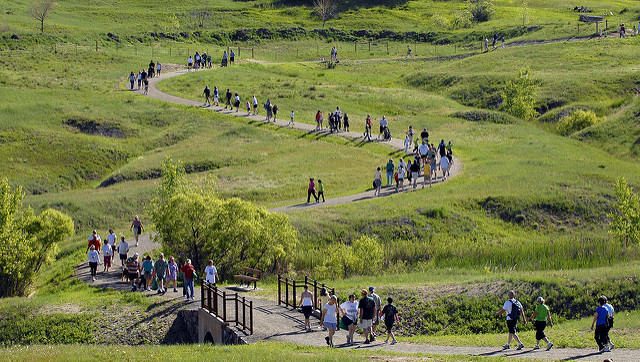
The National Park Service (NPS) is charged with providing innovative, learner-centered inclusive experiences that reflect current scientific and academic research and methods. The National Park System provides unparalleled in-person and remote learning opportunities for students of every age, primarily through the use of interpreters. Following the Centennial Anniversary of the Park Service, it became clear that the issues are changing and audiences are evolving. Issues such as climate change, invasive species and endangered species protection, have the potential to delay, derail or dissuade attempts at dialogue and learning. To this end, the Park Service invited social science academics, practitioners and other subject matter experts to an interactive workshop to develop strategies to inform NPS science communication work in the Park Service’s second century.
Key workshop questions included: 1) how can the NPS effectively address the immediate learning interests of some audiences while delivering transformative learning opportunities for all and 2) how can – or should – the NPS best leverage audience-centered interpretation, mass communications, and technology to deliver experiences that advance critical dialogue, reach traditionally underserved audiences and 3) promote lifelong learning across all audiences.
The workshop outcomes included recommendations for innovative practices and tangible actions that can be implemented towards providing impactful communication. This includes a) methods and approaches for meaningful engagement with existing audiences b) opportunities to inspire interest among disengaged audiences on park topics, c) ideas on how to amplify the effect of these efforts through social networks and spheres of influence and d) identify fertile ground for pioneering new methods and technologies that explore the nexus of science, society and personal values. Over the course of the workshop, drawing from marketing, media, arts and humanities and social science as a whole, the workshop participants identified best practices, knowledge gaps and high-priority needs for data and research.
As part of a long-term relationship with the Park Service, CDR, with a team of NPS and Social Science communication experts, assisted in the design and facilitation of this important workshop.
For more information contact Jonathan Bartsch (jbartsch@mediate.org).



